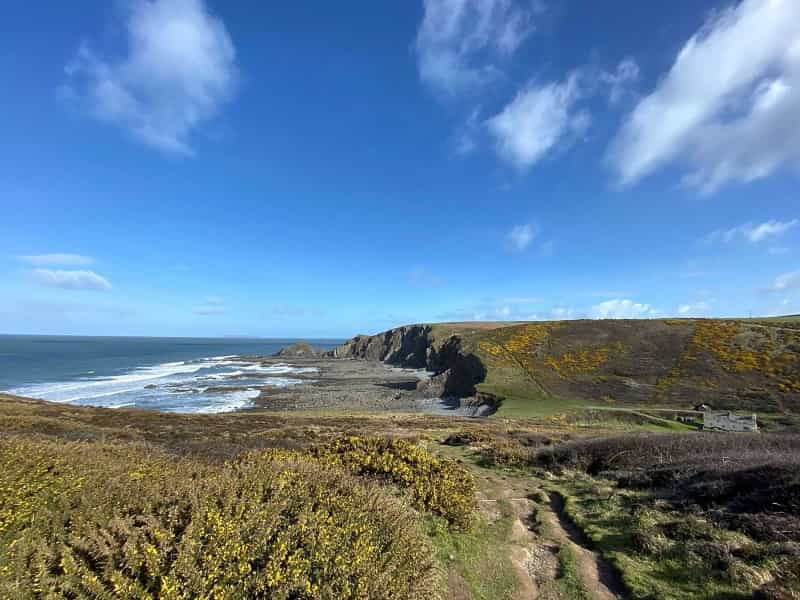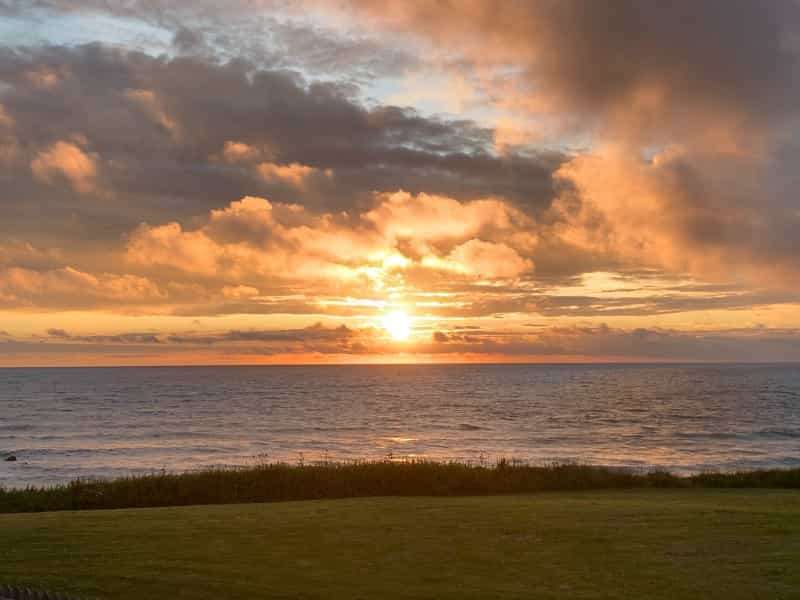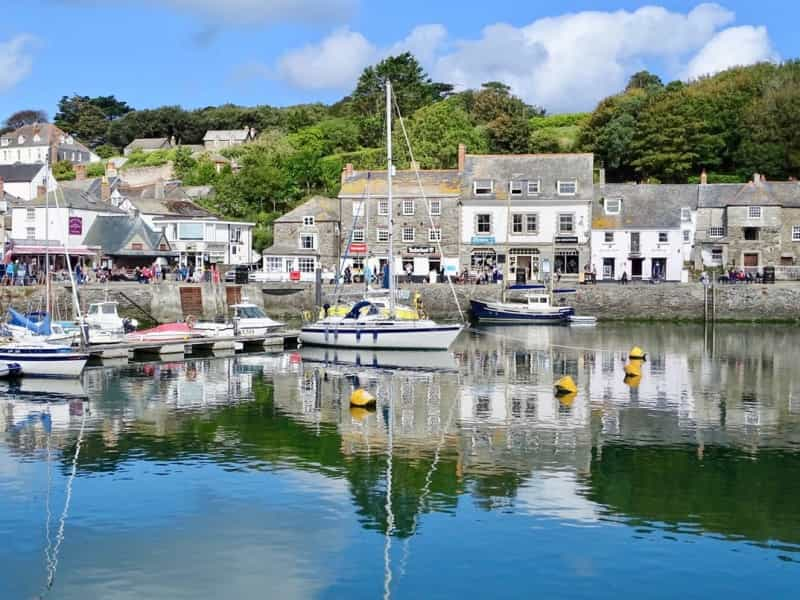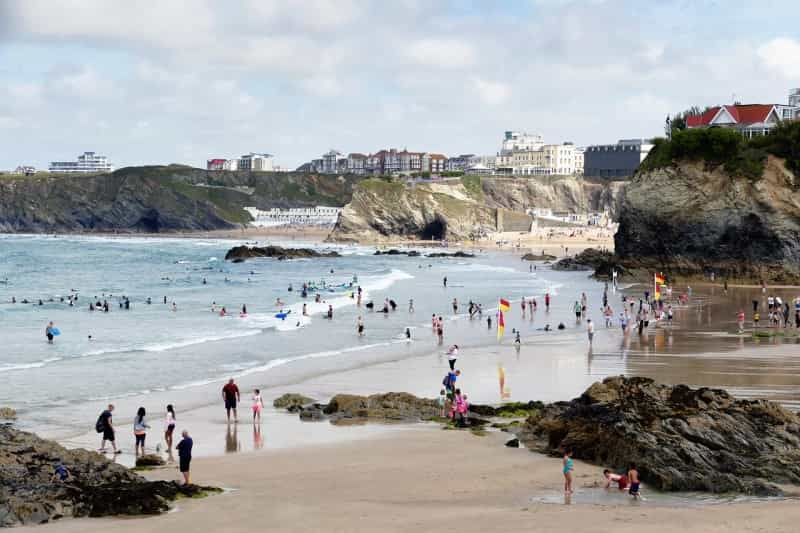The Atlantic Highway: a four-day camping road trip
Looking to visit the best parts of the Devon and Cornwall coast? Stretching from the busy port town of Barnstaple down to surfers’ paradise in Newquay, the Atlantic Highway follows the coast-hugging A39 road along the counties’ wild north coast.
Totalling a length of 90 miles, our suggested four-day itinerary is fairly short by road trip standards. Having said that, there’s a lot packed in, both along the coast and inland, from fine sandy beaches to medieval castles. Add to that the freedom and flexibility of camping – allowing you to wake up to a new view every day – and you’ve got yourself a truly epic journey in the making…
It’s possible to complete the Atlantic Highway in three days or even a weekend, but there’s a lot to see along the way, so we’d recommend taking it more slowly if you have the time. By continuing a few miles down the Atlantic Highway by day and stopping off at a new campsite each night, you’ll be able to embrace everything this spectacular coastline has to offer.

What is the Atlantic Highway?
As you’ll see from the map below, the Atlantic Highway runs along the A39 close to the north coast of Devon and Cornwall, with frequent sea views on the one side and green vistas over an increasingly hilly landscape on the other.
Why camp on the Atlantic Highway?
North Devon and Cornwall have some of the most scenic campsites in the UK and are awash with clifftop farms, coastal holiday parks and cosy glamping getaways. As well as the quality of the accommodation you can expect to find in the area, there’s also quantity, making it easy to find pitches wherever you feel like stopping for the night (although we do recommend booking in advance to avoid disappointment, particularly in the high season).
The A39 is a well-maintained and wide road, making it suitable for campervans, motorhomes and towed caravans as well as tent camping.
Day 1 - Barnstaple to Bude
From Devon to Cornwall along the Hartland Heritage Coast
Distance: 35 miles
Time: an hour

Start off in Barnstaple, a pleasant port town in an attractive location on the river Taw. It’s also on the edge of the well-known Tarka Trail, a car-free walking route that follows the river inland through gorgeous unspoilt scenery.
When you’re ready to set off, take the A39 out of town, passing Bideford – where you can catch the ferry to Lundy Island – and you’ll soon see the rugged Hartland Heritage Coast on your right-hand side.
At Horns Cross, park in a layby for a brisk mile-long walk down to Peppercombe beach, a remote stretch of shingle backed by dramatic red sandstone cliffs. A few miles further on, call in at Clovelly, a traditional former fishing village, and admire the donkeys who were once used to haul baskets of herring up the steep cobbled streets.
There’s a good amount of coastal campsites in this area, so you can either pitch up along the Hartland Heritage Coast or carry on over the border into Cornwall and to Bude, where there are plenty of friendly holiday parks with excellent amenities. Either way, you’ll appreciate the chance to get a good night’s sleep after all those steep walks down to the coast and back.
Tips for day 1
This is the longest day of driving, and it covers the most sparsely populated part of the route. Make sure to stock up in Barnstaple before heading off, as there are only a few villages and hamlets between here and Bude.
Entering Clovelly from the A39 comes with a fee. It is also possible to access the village via the South West Coast Path or other public rights of way.
Day 2 - Bude to Boscastle
Discover north Cornwall’s best beaches
Distance: 15 miles
Time: 30 minutes

Bude has some of the best beaches in Cornwall, hands down. The town has over half a dozen different seaside spots to choose from – if in doubt, start near the town centre at Summerleaze, a sandy beach with a lifeguarded swimming area and an open-air lido. This is a great place to learn to surf, and there are several watersports companies in the area that offer beginner hire and lesson packages.
Once you’ve settled down at a campsite in Boscastle, head into the village centre to see its old fishing harbour, visit the spooky witchcraft museum or take a walk along the coast path to the Pentargon Waterfall, where you might see seals on the adjacent beach.
Tips for day 2
Boscastle, the end point for day two, isn’t too far from the start point, so after leaving Bude you’ll definitely have time to make a detour to Crackington Haven beach or Widemouth Bay as well.
Day 3 - Boscastle to Padstow
Caves, a castle and Cornwall’s foodie capital
Distance: 25 miles
Time: 45 minutes

Leaving Boscastle, stick close to the coast and follow the scenic road around to Tintagel, a clifftop village that's home to a medieval castle said to be the birthplace of King Arthur. Walk over the footbridge that connects the castle to an island in the Atlantic and visit Merlin’s Cave before rejoining the A39 and heading west towards Port Isaac. After lunch with the locals at the village pub, you’ll be all set to journey on towards your destination. Don’t eat too much, though – you’ll want to save room for dinner in Padstow, which is widely regarded as Cornwall’s foodie capital.
Day 4 - Padstow to Newquay
Trevose Head, Newquay and the end of the A39
Distance: 15 miles
Time: 30 minutes

We’ve given you lots of time on your final day, so feel free to have a well-deserved lie-in before packing up, leaving your campsite and carrying on to the end of the Atlantic Highway. If you’ve enjoyed the coast path so far, you’ll definitely want to take advantage of the cliffs around Trevose Head a few miles down the coast from Padstow. Much of the countryside between here and Newquay is owned by the National Trust, so it’s very well preserved.
Finally, roll into Newquay, a smart seaside resort where there are all sorts of activities to choose from. You might like to practise your surfing skills, as board sports are what the town is best known for, but there’s also a top-rated zoo, golf course and aquarium. The local area is very well-served by campsites and holiday parks too, so you’re sure to find somewhere comfortable before heading back home in the morning.
Great campsites for the Atlantic Highway
Bude – Willow Valley Camping Park
Set in a peaceful rural location less than two miles from the beaches and surf spots of Bude, this family-friendly park has grass and hardstanding pitches plus cosy glamping lodges that are particularly handy for those travelling light. This seven-acre park has plenty of room to exercise your dog, and the kids’ play area is a great way for the little ones to relax and make new friends without straying too far from base.
Check availability at Willow Valley
Bude – Coxford Meadow Campsite
Just a mile from Crackington Haven, this campsite is a short walk from the cliffs and coast path. Sheltered from the wind by high hedgerows, it has amenities including spotless toilets and hot showers, a microwave, a freezer for ice packs and a pool table in reception.
Find a pitch at Coxford Meadow
Boscastle – Lower Pennycrocker Farm
This well-kept working farm has spectacular sea views and is half a mile’s stroll from the South West Coast Path or five minutes’ drive from a local independent farm shop. This dog-friendly site is in an excellent position for catching spectacular sunsets, and its amenities are maintained to a high standard.
Book a stay at Lower Pennycrocker Farm
Boscastle – Wideacres Camping
Everyone will have wide smiles at this hilltop site above Boscastle in north Cornwall: it’s a spacious spot with sea views, friendly cows and a play area, plus the added bonus of an indoor games room for a bit of family entertainment in the evening. It’s about a mile from the Atlantic Highway and even closer to the coast, so getting around and seeing the sights will be a breeze.
Availability at Wideacres Camping
Padstow – Music Water Touring Park
Welcoming tents, caravans and motorhomes, this family-friendly campsite has an outdoor pool, a bar and a petting corner with ponies and other friendly animals. Dogs and barbecues are allowed here, and the site is equidistant between the A39 and the gorgeous cliffs around Trevose Head.
More about Music Water Touring Park

Atlantic Highway FAQs
Where does the Atlantic Highway start?
The A39 actually starts in Somerset, but the stretch of road known as the Atlantic Highway starts in north Devon around Barnstaple.
How long is the Atlantic Highway?
If you drive straight down the A39 without stopping, the route would be about 70 miles. However, our route involves visiting a number of towns and villages along the way, meaning you can expect to drive about 90 miles during your Atlantic Highway road trip.
Is Bath on the Atlantic Highway?
No, although it is on the A39, and it is possible to extend the trip eastwards to take in Bath, Somerset and Exmoor National Park if you have time to spare.
What can I do on the Atlantic Highway?
Surfing, cycling, sea kayaking, coasteering, wild swimming… there are dozens of adventurous activities available along the Atlantic Highway. In addition, it’s possible to combine your road trip with a sealife safari or ferry ride over to Lundy Island, or you could explore the dozens of well-preserved West Country towns and villages you’ll travel through on the way.
When is the best time of year to visit Devon and Cornwall?
It really depends on what you’re looking to do when you get there. Surfing with wetsuits is possible well into the low season, but if you’re looking for swimming and sunbathing you might want to consider late summer and early autumn, when the sea is at its warmest. There’s no getting away from the fact that Devon and Cornwall can get busy in the high season, so click here if you’d like to see low-season campsites to help you avoid the crowds.